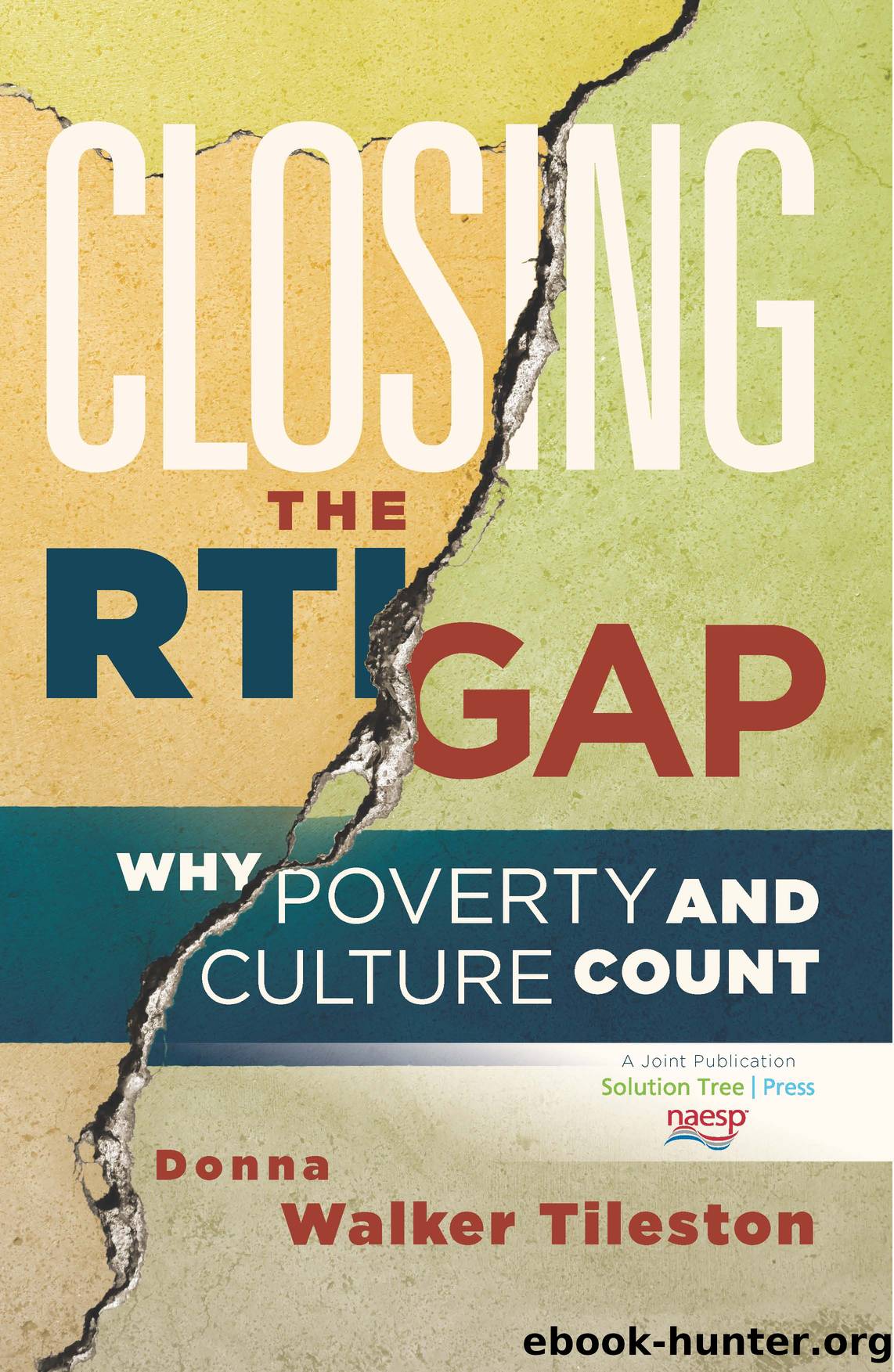Closing the RTI Gap by Walker-Tileston Donna;

Author:Walker-Tileston, Donna;
Language: eng
Format: epub
Publisher: Solution Tree
Published: 2011-08-15T00:00:00+00:00
Figure 4.1: Typical classroom breakdown of students served by RTI tiers.
Tier 1 of a multitier model is crucial to the success of the entire program because it is in this tier that all students should be provided scientific, research-based instruction by a highly qualified teacher who uses universal screening and progress monitoring to determine student needs and progress. However, as we learned in chapter 2, culture plays an enormous role in student success. For that reason, it is essential that teachers differentiate their core instruction in general education classrooms in light of what we know about learning preferences and cultural biases. The best instructional strategy in the world is only as good as those who implement it.
Suppose your school has decided to create an intervention model based on the principles of response to intervention and has created teams among faculty and staff to plan for implementation. How can you modify best practices for the cultures within your classrooms? Effective teachers do not use different instructional strategies for different cultures. Rather, they use identified best practices that are modified for cultural differences.
Appropriate responses to the needs of students in poverty must be based on knowledge of the students. Teachers need to understand the culture of their students, including how students view education and prefer to learn, the importance of collaboration, the kinds of experiences students bring to school, and studentsâ vocabulary knowledge. Teachers of English learners must assess and take into account their studentsâ English proficiency. Teachers must move away from a model that looks at students in poverty as individuals who need to be âfixed.â Instead, teachers must adopt a model that looks first at studentsâ strengths and then fills knowledge and experience gaps through appropriate scaffolding of instruction. Teachers can close the RTI gap from the outset by building relationships first, focusing on vocabulary, differentiating instruction, and teaching to reach all systems of thinking.
Download
This site does not store any files on its server. We only index and link to content provided by other sites. Please contact the content providers to delete copyright contents if any and email us, we'll remove relevant links or contents immediately.
The Art of Coaching Workbook by Elena Aguilar(50168)
Trainspotting by Irvine Welsh(21078)
Twilight of the Idols With the Antichrist and Ecce Homo by Friedrich Nietzsche(18324)
Fangirl by Rainbow Rowell(8819)
Periodization Training for Sports by Tudor Bompa(7946)
Change Your Questions, Change Your Life by Marilee Adams(7405)
This Is How You Lose Her by Junot Diaz(6476)
Asking the Right Questions: A Guide to Critical Thinking by M. Neil Browne & Stuart M. Keeley(5387)
Grit by Angela Duckworth(5322)
Red Sparrow by Jason Matthews(5225)
Paper Towns by Green John(4826)
Room 212 by Kate Stewart(4767)
Ken Follett - World without end by Ken Follett(4467)
The Sports Rules Book by Human Kinetics(4098)
Housekeeping by Marilynne Robinson(4084)
Double Down (Diary of a Wimpy Kid Book 11) by Jeff Kinney(3958)
Papillon (English) by Henri Charrière(3942)
The Motorcycle Diaries by Ernesto Che Guevara(3804)
Exercise Technique Manual for Resistance Training by National Strength & Conditioning Association(3798)
